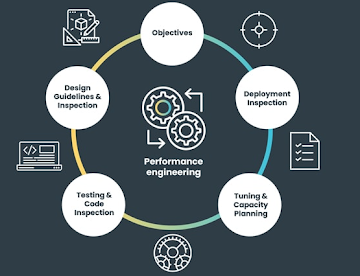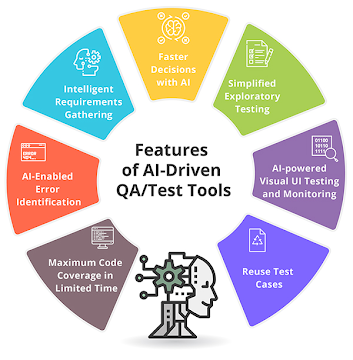Software testing is more important than ever, thanks to the number of applications that organizations use, and as safety and security costs have increased. World Quality Report states that 60% of organizations would put Cost as the biggest barrier to test coverage. Rising practices like DevOps and continuous testing has led to QA becoming more integrated into the development cycle and thus testing budgets can no longer be considered separate from software engineering budgets.
Well into the second quarter of 2021, these are the software testing trends that have taken the centre stage.
Software Testing Trends 2021
1. Blockchain testing
As enterprises like automotive or financial services providers face the problem of securely storing heaps of information, blockchain-based solutions have proven to be a good fit since a decentralized data structure that cannot be changed but expanded can make fraud difficult. Investopedia estimates that 11.7 billion USD will be spent in 2022 on blockchain products.
Adopting blockchain isn’t proving to be simple for every organization though. Those with legacy system integration issues, higher adoption cost, compliance, and privacy concerns tend to pay more for this solution. The transaction process would involve validation, encryption/decryption, and transmission where a single problem can cause a system failure. Blockchain testing, thus, becomes business-critical.
2. IoT and big data testing
Increased IoT complexity provides a more connected world but has also rapidly increased the workload for testing. The combinations between protocols, platforms, and devices are too high and thus the market for QA has experienced a demand for compatibility, performance, security, and usability testing. The World Quality Report also states that only 41% of organizations have IoT testing in place, while 30% of the respondents would like to put IoT functionality (with testing) built into their products.
IoT applications have also led to diverse volumes of data which is being generated and accumulated (Amazon as an example), resulting in big data testing validating the organization’s capability to make data-driven decisions, strategize and improve market targeting. Marketing strategies can now be built around big data which makes big data testing a common practice.

3. Performance engineering
The captured market share can be correlated to the number of platforms on which the product is available, which makes user experience carry more weight and drive the requirements thanks to shorter development cycles and more frequent releases.
Consequently, there has been a re-prioritization in favor of a user-focussed viewpoint towards quality at every stage of the development life cycle in order to prevent performance-related issues at the beginning of the life cycle itself. This can be done by implementing the required performance metrics right from the first design itself. This is more of a cultural approach rather than a set of rules and encourages the team to study business value and the end customers in addition to the technology.

4. Agile and DevOps
DevOps blurs the boundaries between development, testing, and operations so that time to market, deployment speed, and ROI is increased. On a similar note, the QAOps approach aims to increase the cohesion between testing and development teams in the CI/CD pipeline. There is an ever-increasing demand for quality assurance automation tools and expertise in order to stay ahead of the competition.


5. QA Automation
The Gitlab DevSecOps survey states that automation still has momentum. 35% of the respondents said that their organization has partial automation in place while 12% said that the organization has already automated its efforts. With the increased adoption of agile leading to bugs/issues getting detected faster, test automation makes QA more efficient by making sure that the core functionality remains unimpacted by the continuous deployment.
In a similar phase, continuous testing also exists which aims to assess, evaluate and lower the risks involved with a new release before it affects end-users. QA Automation will only go so far though. Manual intervention from users is a key part of products and applications which are most often easy to automate. Thus, there’s also a need to have a strategy in place to balance both manual and automated testing.
6. AI for automation
Global investment in 2025 in AI alone is estimated to reach 200 billion USD thanks to constantly evolving data used in applications which leads to constantly increasing test coverage.
Teams can now leverage ML/AI to improve their strategies with the help of analytics and reporting. As an example, automation engineers can use AI algorithms to prioritize the scope for further test automation, detect and remove redundant test cases and ensure optimal test coverage through analyzing keywords from the Requirements Traceability Matrix.
Although end-user behavior patterns are still something that requires humans, ML-based analytics can amplify the capabilities of the human by exploring the unexplored areas in the applications. The insights produced can be used to identify the possible parameters of behavior using historical data. In the future, we can easily expect analytics-based initiatives to gain momentum in identifying problematic areas to cover.













